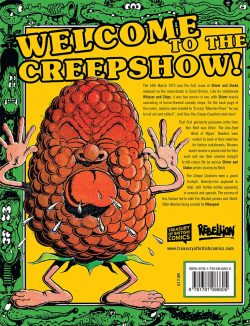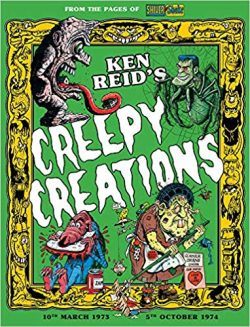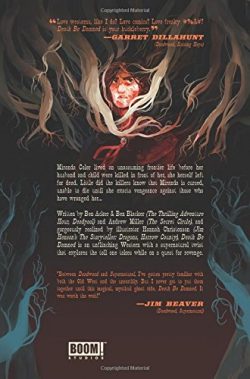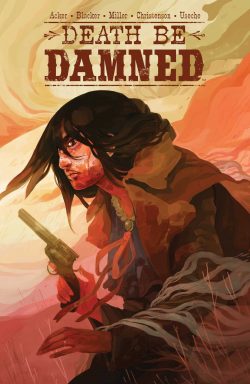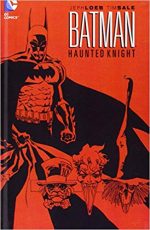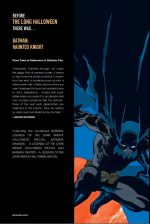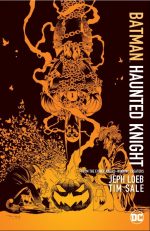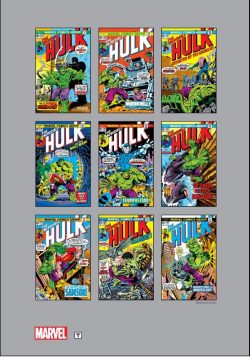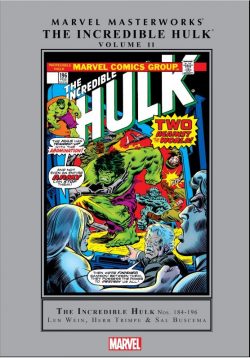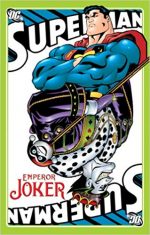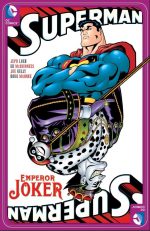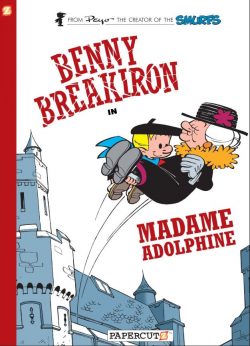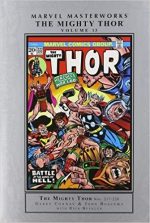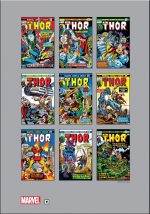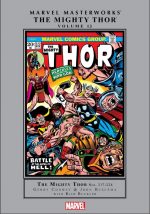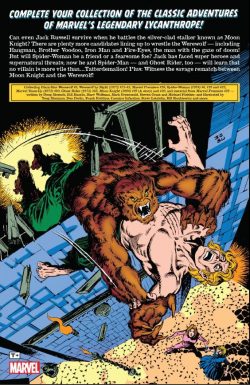
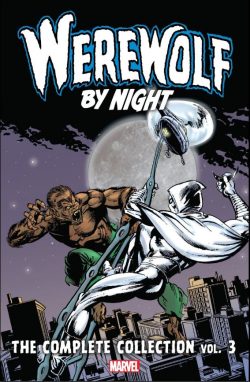
By Doug Moench, Bill Mantlo, Marv Wolfman, Steven Grant, Michael Fleisher, Mark Gruenwald, Yong Montaño, Don Perlin, Frank Robbins, Carmine Infantino, Steve Leialoha, Bill Sienkiewicz, Tom Sutton, Win Mortimer & various (Marvel)
ISBN: 978-1-3029-1158-4 (TPB)
As Marvel slowly grew to a position of market dominance in 1970, in the wake of losing their two most innovative and inspirational creators – Steve Ditko and Jack Kirby – they did so less by experimentation and more by expanding proven concepts and properties.
The only real exception to this was a mass release of horror titles rapidly devised in response to an industry-wide downturn in superhero sales. This move was handily expedited by a rapid revision in the wordings of the increasingly ineffectual Comics Code Authority rules.
Almost overnight, nasty monsters (as well as narcotics and bent coppers – but that’s another story) became acceptable fare within four-colour pages and, whilst a parade of 1950s pre-code reprints made sound business sense (so they repackaged a bunch of those too), the creative aspect of the contemporary fascination in supernatural themes was catered for by adapting popular cultural icons before risking whole new concepts on an untested public.
As always, the watch-word was fashion: what was hitting big outside comics was to be incorporated into the mix as soon as possible.
When proto-monster Morbius, the Living Vampire debuted in Amazing Spider-Man #101 (October 1971) and the sky failed to fall in, Marvel moved ahead with a whole line of scary superstars – beginning with a werewolf and traditional vampire – before chancing something new via a haunted biker who could tap into both Easy Rider‘s freewheeling motorcycling chic and the supernatural zeitgeist.
With its title cribbed from a classic short thriller from pre-Code horror anthology Marvel Tales #116 (July 1953), Werewolf by Night debuted in Marvel Spotlight #2. It had been preceded by masked western hero Red Wolf in #1 and followed by the afore-hinted Ghost Rider revival, but this hairy hero was destined to stick around for a while. Marvel had a long-time tradition of using old (and presumably already copyrighted) names and titles when creating new series and characters. Hulk, Thor, Magneto, Doctor Strange and many others all got notional starts as throwaways before being re-imagined as major characters…
This third copious trade paperback and eBook compendium compiles more moody misadventures of a good-hearted young West Coast lycanthrope who briefly shone as an unlikely star for the entire length of a trading trend, Werewolf By Night #31-43, Giant-Size Werewolf #5, Marvel Premiere #28 & 59, Spider-Woman #6, 19 & 32, Marvel Team-Up #93, Ghost Rider #55, and Moon Knight #29-30: ending his solo run and gathering the many guest shots the lycanthrope enjoyed afterwards, collectively spanning July 1975 to April 1982.
Jack Russell is a teenager with a thankfully rare but very disturbing condition. On her deathbed, his mother revealed unsuspected Transylvanian origins to her beloved boy: relating a family curse which would turn him into a raging beast on every night with a full moon… as soon as he reached his 18th birthday.
And so it began…
After many months of misunderstanding as Jack tried to cope alone with his periodic wild side, Jack’s stepfather Philip Russell expanded the story, revealing how the Russoff line was cursed by the taint of Lycanthropy: every child doomed to become a wolf-thing under the full-moon from the moment they reached eighteen.
Moreover, the feral blight would do the same to his little sister Lissa when she reached her own majority…
As Jack tried and repeatedly failed to balance a normal life with his monthly cycle of uncontrollable ferocity, he met his eventual mentor and confidante Buck Cowan, an aging writer who became Jack’s best friend after the pair began to jointly investigate the wolf-boy’s history. Their incessant search for a cure was made more urgent by little Lissa’s ever-encroaching birthday. Along the way Jack even found a steady girlfriend who understood his needs. Of course, Topaz was a mystically empowered terror with family issues from hell…
During their researches they clashed swords with many monsters – human or otherwise – including off-the-rails cop Lou Hackett, who had been going increasingly crazy in his hunt for a werewolf nobody believed in, and fellow lycanthrope Raymond Coker who had found a shocking remedy to their condition…
For one werewolf to lift his curse he/she had to kill another one…
Following a context-expanding Introduction from former Marvel editor Ralph Macchio, the shaggy suspense resumes with Giant-Size Werewolf #5 which shifted into full-on fantasy mode. Scripted by Doug Moench and illustrated by Yong Montaño, ‘Prologue: I Werewolf’ recaps Jack’s peculiar problems before ‘The Plunder of Paingloss’ discloses how the leaders of dimensional realm Biphasia – permanently polarised between night and day – instigate a ‘Bad Deal with the Devil’s Disciple’ on Earth when demonist Joaquin Zairre kidnaps the werewolf…
With the beast dispatched though a ‘Doorway of the Dark Waters’, Jack is soon a pawn in a sorcerous war where ‘Fragile Magic’ on the world of light and darkness allows him and his allies to raid the ‘The Ark of Onom-Kra’ and expose a secret tyrant in ‘Silver Rain, Sardanus and Shadow’…
Returned to the real world, Werewolf by Night #31 (July 1975) offers a turning point as ‘Death in White’ (Moench & regular artist/co-plotter Don Perlin) sees Jack plumb depths of utter despair after a skiing weekend turns into a nightmare when the werewolf stalks a little girl and Buck nearly dies trying to save her…
WBN #32 (August 1975) then introduces mercenary Marc Spector who is hired by criminal capitalists, equipped with a silver-armoured costume and weapons and tasked with capturing Russell or his animal other as ‘…The Stalker Called Moon Knight’ (Doug & Don with the assistance of Howie Perlin).
The bombastic battle and its ferocious sequel ‘Wolf-Beast vs. Moon Knight’ received an unprecedented response and quickly propelled the lunar avenger to prominence as Marvel’s edgy answer to Batman: especially after the mercurial merc rejects his employers’ entreaties and lets the wolf, as well as collateral hostages Lissa and Topaz, run free…
Next up is a uniquely odd attempt to create a team of terrors. Marvel Premiere #28 (February 1976) introduced the initial iteration of The Legion of Monsters in ‘There’s a Mountain on Sunset Boulevard!’ courtesy of Bill Mantlo, Frank Robbins & Steve Gan.
When an ancient alien manifests a rocky peak in LA, the werewolf, Man-Thing, Morbius and Ghost Rider are irresistibly drawn into a bizarre confrontation which might have resulted in the answer to all their wishes and hopes, but instead only leads to destruction, death and deep disappointment…
In Werewolf by Night #34 (October 1975, by Moench & Perlin) another extended eerie suspense saga sees Jack, Lissa, Topaz and Buck’s girlfriend Elaine Marston brave a haunted house in search of a cure for Cowan’s werewolf-caused coma.
Elaine had lost her first husband to the doomed domicile and it takes a lot to bring her back. That triggering event is the dying Buck muttering the name of deceased spiritualist Belaric Marcosa – who apparently still roams the hell-house where ‘Not All the Shades of Death nor Evil’s Majesty’ can rein in his sadistic games…
Braving the unknown, the terrified quartet fetch up to the mansion and are soon enduring ‘Evil in Every Stone, No Longer Hiding’; becoming enmired in a war between ‘Marcosa in Death’ and the trapped spirits of the countless victims he has tortured and destroyed.
Their horrific psychological ordeal eventually results in victory for Jack and his companions as ‘The End’ produces a miraculous recovery in the dying Buck and the cessation of Marcosa’s phantom depredations…
With tastes changing, WBN #38 takes a sharp change of direction as Jack exiles himself to the wilderness, only to stumble on a desperate fugitive fighting to save his baby from a murderous gangster who had taken up with his former wife. In the midst of such mundane matters, Jack is visited by a trinity of infinite beings who threaten to alter his existence forever and ominously warn that ‘Rebirth Also Kills’…
The celestial visitants are also in touch with former werewolf Raymond Coker as he squats in a hut in distant Haiti, and even appear to Lissa and Topaz as they tend the still-recuperating Buck.
The “Three Who Are All†are subtly ensuring all players are in place for a game of cosmic consequences and in #39, when Jack races back to his friend, he finds Coker and mystic troubleshooter Brother Voodoo waiting. No sooner are introductions made than an army of zuvembies (posh name for magical zombies, okay?) attack and Russell learns that ‘Some are Born to the Night’…
Portentous proclamations of unfulfilled destinies propel the adventurers and Topaz back to Haiti where obsessed former cop Vic Northrup is looking for answers to Lou Hackett’s death. Ahead of them all is an infernal pit nurturing a shocking travesty of life with resurrected wizard Dr. Glitternight in charge of all the ‘Souls in Darkness’…
Revealed in WBN #41 as a former member of the gestalt which was once “Five Who Are Allâ€, Glitternight’s fascination with monster-making is at last explained as the arcane abomination’s attempts to dominate reality are spectacularly thwarted through the return of the missing fourth celestial as well as the indomitable resistance of Brother Voodoo and Jack in ‘…And Death Shall be the Change’…
Key to their eventual triumph is the moment when Russell discovers how to transform into a werewolf in full control of his mental faculties; at will, day or night…
Returning to America, the Werewolf-by-Choice naturally decides to become a superhero and moves to New York in time to stumble onto a plot by the Masked Marauder. Also on scene, is a certain Armoured Avenger and, after the usual misunderstandings, Jack is shaggy knees-deep in trouble with ‘The Marauder and the Man of Iron’…
The tale – and the series – concludes in Werewolf by Night #43 (March 1977) as ensorcelled fang-&-claw unite with high-tech wizardry to destroy an awesome animalistic automaton and end the ‘Terrible Threat of the Tri-Animan’…
Despite the rather lame and ill-considered attempt to reinvent the series at the last, this moody masterpiece of macabre menace and all-out animal action covers some of the most under-appreciated magic moments and terror tales in Marvel history: tense, suspenseful and solidly compelling. The public and numerous creators must have agreed with the sentiment as Jack Russell became a regular on the guest circuit, popping up in many other ascendant titles.
One such cameo was Spider-Woman #6 (September 1978, by Marv Wolfman, Carmine Infantino & Rick Bryant) as arachnoid outcast Jessica Drew battled ancient sorceress Morgan Le Fay. ‘End of a Nightmare!!’ saw the duel impinge on Russell just as he locks himself away for the three nights of the full moon when his newfound sentience is overwhelmed by lunar lunacy. Cue vicious, inconclusive clash…
In Spider-Woman #19 (October 1979) Mark Gruenwald, Steven Grant, Infantino & Mike Esposito unleashed ‘The Beast Within’ when newly-directionless Jessica stumbles into the Werewolf again, just as Russell is hunting murderous super-criminal The Enforcer. The resultant collaboration is less than stellar and far from harmonious…
Carrying on as a clandestine crusader, the Werewolf allies with Spider-Man in Marvel Team-Up #93 (May 1980) as Grant, Tom Sutton, Infantino & Jim Mooney detail how the webslinger stumbles into Jack’s pursuit of the Enforcer only to encounter another old enemy: demented sewer-dweller Tatterdemalion. ‘Rags to Riches!’ pits the mismatched heroes against the deranged dreg before the wallcrawler is diverted by seductive sociopath Dansen Macabre, leaving Jack to soldier on until Spider-Woman #32 (November 1980), where he unwillingly subjects Jessica Drew to ‘The Fangs of Werewolf by Night’, thanks to mind-bending villain Dr. Malus and creative team Michael Fleisher, Steve Leialoha & Mooney…
Ghost Rider #55 (April 1981, by Fleisher & Perlin) sees the Werewolf’s hunt for Tatterdemalion again derailed when the lycanthrope is mistakenly intercepted by Johnny Blaze in his demon biker incarnation, after which a vignette from Marvel Premiere #59 in the same month finds Jack and Lissa forced to suffer ‘Full Moon on the Highway!’ (by Grant & Win Mortimer, April 1981) after a traffic spill delays their rush for isolation and safety.
Since his WBN debut, Moon Knight had developed into a cult classic character, lurking in his own dark corner of the Marvel Universe and allowing moodier, more experimental fare to blossom.
Moon Knight #29 and 30 (March and April 1982) offered some of the most potent material of his initial run, and most visceral art of the entire decade in ‘Morning Star’ and ‘The Moonwraith, three Sixes and a Beast’ by Moench & Bill Sienkiewicz wherein Jack Russell is targeted by a publicity-hungry band of militant Satanists led by the cunning Belial.
This savvy deceiver tries to turn the Werewolf into the biblical Beast of the Apocalypse to usher in the end of days and bolster the flagging support of his congregation. When the fugitive Russell’s flight brings him to New York, it’s just as the full moon robs him of his usual control of the predator within…
Ultimately, however, Fist of Khonshu and Wild Thing table their differences long enough to end the threat of the mobster-like cultists and save the world. …And when the fur and fists finish flying, the Werewolf lopes off into the unknown…
This classic compendium concludes with a bonanza of bonus features, beginning with Sienkiewicz’s stunning back cover portrait of the best from Moon Knight #29; assorted pin-ups, original art/ covers and text features taken from the various issues gathered here.
This moody masterpiece of macabre menace and all-out animal action covers some of the most under-appreciated magic moments in Marvel history; tense, suspenseful and solidly compelling. If you feel the urge to indulge in a mixed bag of lycanthropes, bloodsuckers and moody young misses – this is a far more entertaining mix than many modern movies, books or miscellaneous matter…
© 1975, 1976, 1977, 1978, 1979, 1980, 1981, 1982, 2018 Marvel Characters, Inc. All rights reserved.
